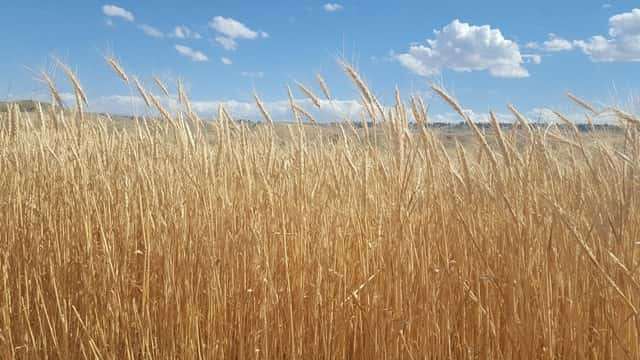Note to Ag Suppliers: Montana is INCREASING its Acres…for Wheat…and Chickpeas…and Lentils…and Dry Beans…and Canola…and Corn.
If you sell things to Montana Farmers and Ranchers, you might want to stock up.
A few weeks ago we reported that Montana cattle producers currently have 2.65 million head, which is 6{43a21437b022293ea22983a65937d7e18883fb2ff2b11e03a1041d36bd400603} MORE CATTLE than they had two years ago. To agri-businesses, that means that those cattle will need more feed, and more animal health supplies, and more ear tags, and more stock trailers, and…well…just more inputs of all kinds.
Well, now the latest estimate is that Montana CROP producers are also planning to increase production. The March 2017 Prospective Plantings Report made it clear that Montana farmers intend to plant more acres this spring. That is good news if you sell seed, or fertilizer, or crop protection products, or tires, or equipment, or fuel.
According to the Montana Field Office of the Ag Statistics Service, Montana growers intend to plant:
-
4{43a21437b022293ea22983a65937d7e18883fb2ff2b11e03a1041d36bd400603} more total Wheat – with all Wheat acreage expected at 5.19 million acres
-
20.9{43a21437b022293ea22983a65937d7e18883fb2ff2b11e03a1041d36bd400603} more Spring Wheat – at 2.6 million acres
-
104{43a21437b022293ea22983a65937d7e18883fb2ff2b11e03a1041d36bd400603} more Dry Edible Bean acreage – at 210,000 acres
-
100{43a21437b022293ea22983a65937d7e18883fb2ff2b11e03a1041d36bd400603} increase in Garbanzo Beans (Chickpeas) – at 198,000 acres
-
23{43a21437b022293ea22983a65937d7e18883fb2ff2b11e03a1041d36bd400603} more Lentil acres – at 640,000 acres
-
77{43a21437b022293ea22983a65937d7e18883fb2ff2b11e03a1041d36bd400603} more Canola – expecting to plant a record-high 110,000 acres.
-
4{43a21437b022293ea22983a65937d7e18883fb2ff2b11e03a1041d36bd400603} more Corn – at 120,000 acres
The increase in Montana Wheat is opposite the national trend, where 46.1 million wheat acres is down 8{43a21437b022293ea22983a65937d7e18883fb2ff2b11e03a1041d36bd400603} and is the smallest number of wheat acres since the first tally back in 1919. A recent article in the Billings Gazette pointed out that, “After losing 1.2 million acres to other crops since 2014, wheat picked up 200,000 acres in Montana.”
Where are these acreage increases coming from?
Well, some of the new plantings are into acres that were previously rotated into fallow, but are now being planted with a variety of cover crops.
Of course, some of the above Acreage Increases have come at the expense of reduced acreage in other crops, such as:
-
Winter Wheat seeded last fall for harvest in 2017 was down 350,000 acres, at 1.90 million acres
-
Oats will be down 5,000 acres expecting to have 55,000 acres seeded.
-
Barley is expected to be down 300,000 acres if only 690,000 acres is planted
-
Durum wheat acres will be down 90,000 acres, with 690,000 acres expected
-
Hay acres will be down 50,000 acres, if producers only harvest 2.60 million acres
-
Sugarbeet planting could be down 600 acres from last year, to 45,000 acres.
-
Flaxseed will be down 4,000 acres as producers intend to plant only 25,000 acres
-
All Dry Edible Pea acreage is down 150,000 acres, to 460,000 acres, from last year.
One key take-home message is that, when facing challenging commodity prices, growers look for new and better choices; and they often change their farming practices to increase their production…including planting more acres.
The Agri-Businesses that supply those farmers will need to position themselves with the changing tools, and new inputs and the increased service that those famers will need to be successful.
Northern Ag Network – 2017


